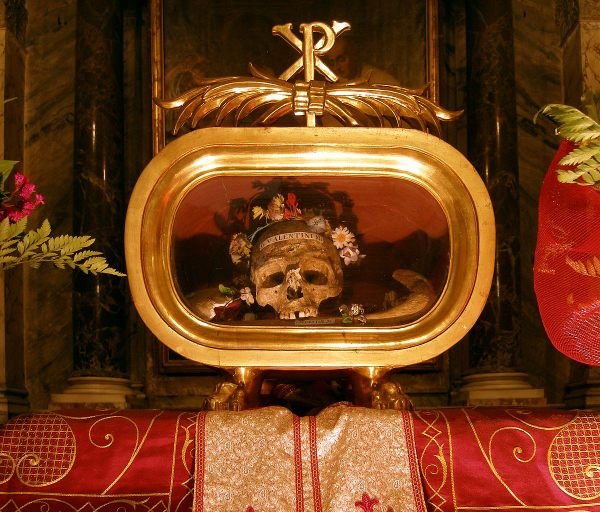A skull resides in a glass reliquary in Rome’s Basilica di Santa Maria in Cosmedin, surrounded by flowers. Lettering painted across the forehead identify the owner as none other than of the patron saint of lovers, St. Valentine.
Knowing just exactly whose skull it is, though, is complicated. There was more than one Catholic saint known as Saint Valentine, and there was approximately 1500 years between those martyrs’ deaths and the enthusiastic distribution and labeling of bodies in the Victorian era. Finally, and most troubling, there is the fact that no less than 10 places around the world claim to house the saint’s relics.
Though not much is really known of the real men behind the myth, at least two of the Saints Valentine lived in Italy in the late 3rd century, and another in North Africa around the same time. Over time, the stories of these different men seem to have merged. Most of the mythology about Valentine centers around him being a patron of lovers. In 496, Pope Gelasius I made February 14—originally part of the Roman festival of Lupercalia—a feast day dedicated to St. Valentine.
The Basilica di Santa Maria in Cosmedin itself is very old, standing on the site of an ancient Roman temple that dates to the second century B.C. Most of what you see today dates to the 8th and 12th centuries, including the crypt located beneath the altar.
The skull can be found in the side altar on the left side of the church. While you’re there, stop by the portico to visit with the famous Bocca della Verità (mouth of truth).






